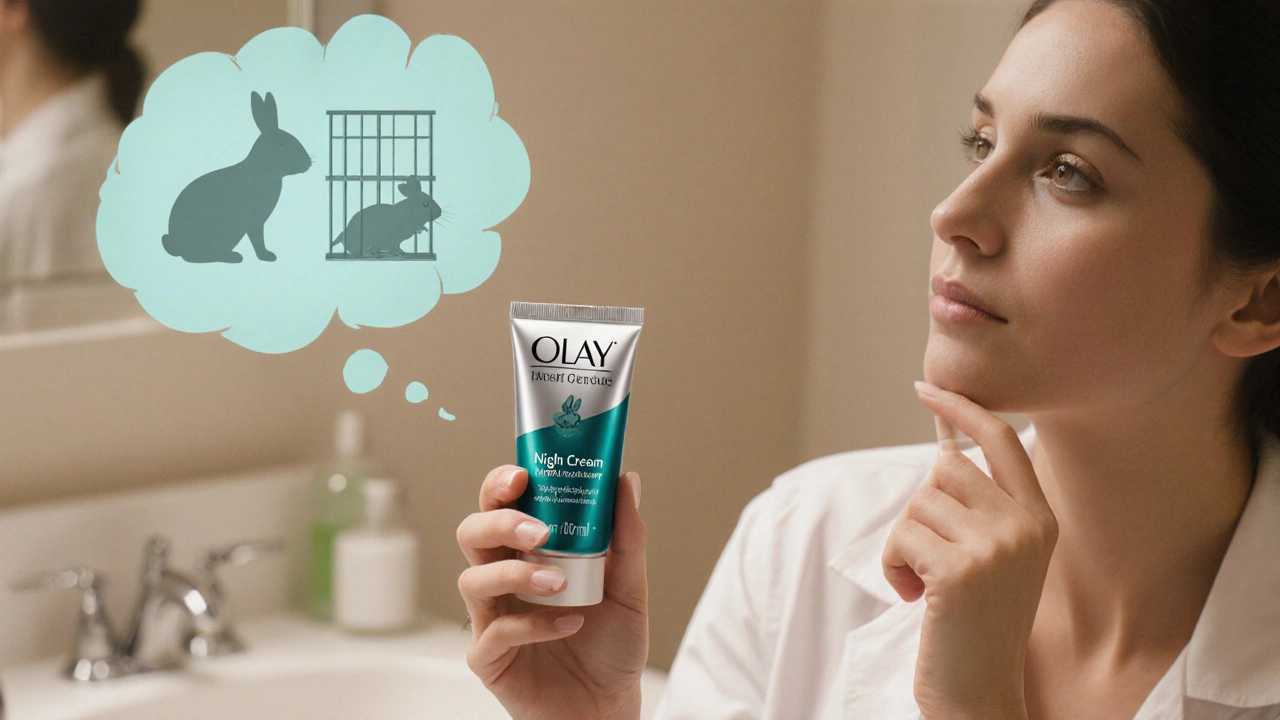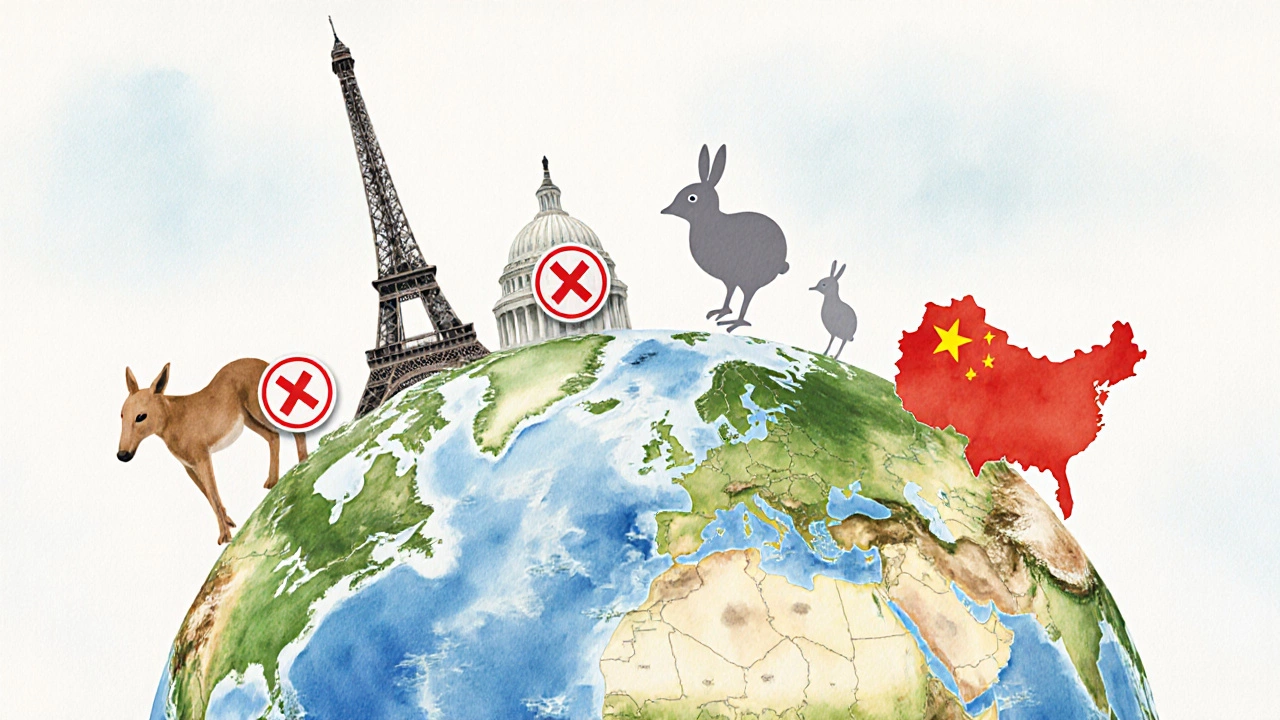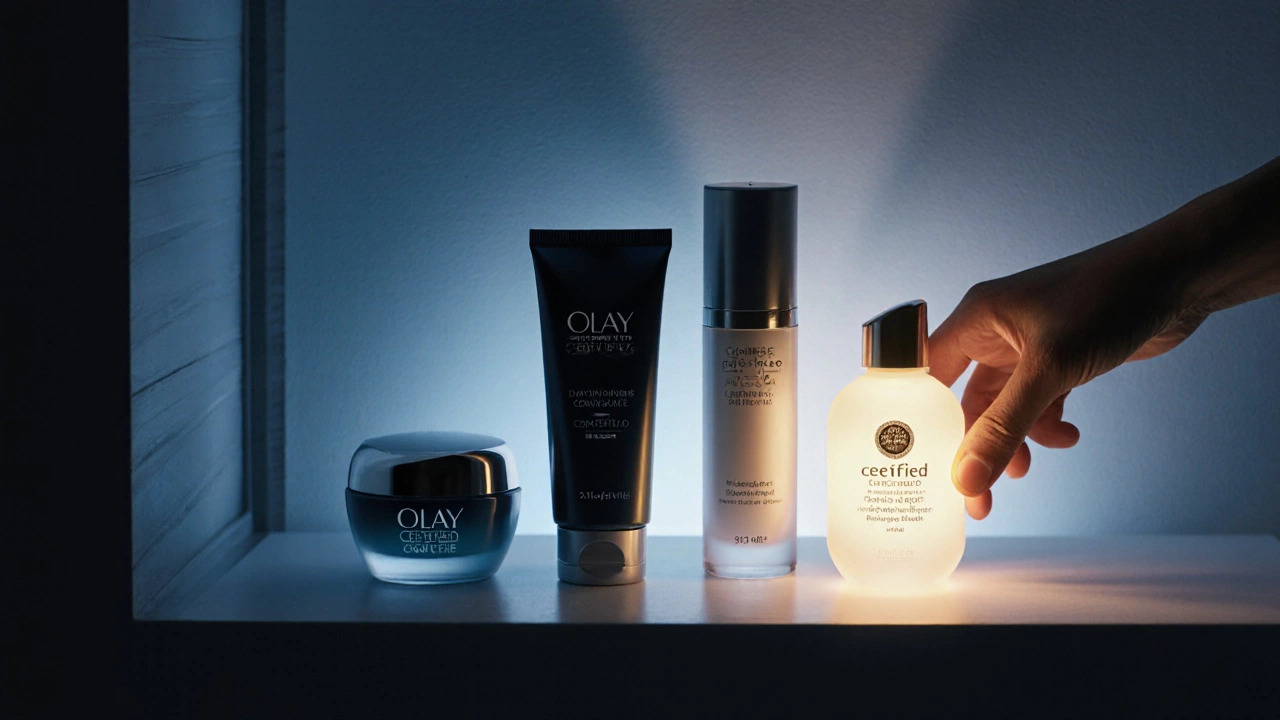
Olay Cruelty-Free Region Checker
Check Olay's cruelty-free status in your country
Select your country or region to see if Olay products are cruelty-free where you live.
Note: Olay doesn't test on animals for finished products unless required by law in your region.
When you pick up an Olay moisturizer or night cream, you probably wonder whether the brand harms animals behind the scenes. The short answer: Olay doesn’t conduct animal testing on its finished products, but the reality is tangled with regulations, parent‑company policies, and a few regional exceptions. In this guide we’ll untangle the web, show you where the truth lives, and give you a clear checklist to decide if Olay fits your cruelty‑free standards.
What "cruelty‑free" actually means
Before diving into Olay’s specifics, let’s nail down the definition most consumers use. A product is generally called cruelty‑free when the brand does not *conduct* animal testing on the final product *or* on its ingredients, and when it does not outsource testing to a third‑party that uses animals. Certifications like Leaping Bunny or PETA enforce that rule. The term does **not** automatically mean the brand opposes all animal use in research; it simply means no animals are used for the specific product in question.
Olay’s corporate background
Olay is a skincare line owned by global consumer‑goods giant Procter & Gamble (P&G). P&G’s public stance is that it does not support animal testing for cosmetics sold in markets where it’s illegal. However, because P&G also makes pharmaceuticals and household chemicals, the company sometimes conducts animal studies for non‑cosmetic products, a nuance that confuses many shoppers.
Global regulations that shape Olay’s testing practices
- EU Cosmetics Regulation (EU) - bans animal testing for finished products and ingredients. Any brand selling in Europe must prove compliance.
- U.S. Food and Drug Administration (FDA) - does not require animal testing for cosmetics, but it also doesn’t forbid it. Companies may still run studies to satisfy internal safety assessments.
- New Zealand Animal Welfare Act - aligns with many cruelty‑free standards, prohibiting unnecessary animal testing for cosmetics.
Because regulations differ, Olay’s approach varies by market.
Olay’s official testing policy (2025)
On its website Olay states: “We do not test our finished products or ingredients on animals unless required by law.” The key phrase is “unless required by law,” which opens the door for a limited set of regions where animal testing may still occur - primarily when a government mandates safety data that can only be obtained through animal studies.
In practice, Olay relies on the following safety workflow:
- In‑vitro (cell‑based) assays for most ingredient safety screens.
- Computer modelling (Quantitative Structure‑Activity Relationships) to predict toxicity.
- When a regulator demands animal data (e.g., certain preservatives in the United States), Olay contracts with a certified lab that follows Good Laboratory Practice.
The company also notes that it has not performed any new animal tests since 2016, and any historical data used today comes from older studies that are now archived.

Regional snapshot: Where animal testing may still happen
| Region | Legal requirement for animal testing | Olay’s current practice |
|---|---|---|
| European Union | Ban on animal testing for cosmetics and ingredients | Fully cruelty‑free; uses in‑vitro alternatives |
| United States | No ban; some state‑level requirements for specific ingredients | Rare, case‑by‑case testing only when mandated |
| Canada | No explicit ban, but Health Canada encourages alternatives | Same as U.S. approach |
| Australia & New Zealand | Animal Welfare Act discourages non‑essential testing | Criminal‑free; uses existing data where required |
| Asia (e.g., China, South Korea) | China lifted mandatory animal testing for imported cosmetics in 2021, but some local products still require it | Olay products sold in China are generally animal‑test‑free, but legacy formulations may have historical data |
How to verify Olay’s cruelty‑free status yourself
Since Olay isn’t certified by Leaping Bunny or PETA, you’ll need a little detective work. Here’s a quick checklist:
- Visit Olay’s official website and read the “Animal Testing Policy” page.
- Look for the phrase “unless required by law.” If it appears, note the markets you’re buying for.
- Check the ingredient list for substances that are known to trigger mandatory testing (e.g., certain preservatives like formaldehyde releasers).
- Consult third‑party databases like Cosmetics Database or the Leaping Bunny list to see if Olay is excluded.
- When in doubt, contact Olay’s consumer support and ask for the latest test‑data policy for the specific SKU you want.
Common myths and misconceptions
Myth #1: “If a brand isn’t Leaping Bunny certified, it must test on animals.”
Reality: Many large companies, including Olay, operate under strict internal policies that already meet or exceed the standard. Certification is a marketing badge, not a legal requirement.
Myth #2: “All Olay products are the same across the world.”
Reality: Formulations can differ by region to meet local regulations, which may affect testing requirements.
Myth #3: “If a brand uses animal‑derived ingredients, it’s automatically non‑cruelty‑free.”
Reality: Animal‑derived ingredients (like beeswax) don’t necessarily involve testing. The cruelty‑free label focuses on testing, not ingredient sourcing, though many consumers prefer both.

Alternatives for the strictest cruelty‑free shoppers
If you want a brand that carries a recognized cruelty‑free certification, consider these options:
- The Ordinary - Leaping Bunny certified.
- Paula’s Choice - PETA‑approved.
- Drunk Elephant - Both PETA and Leaping Bunny.
These brands often use the same scientific rigor as Olay but have pursued certification to reassure shoppers.
Practical steps to keep your skincare routine cruelty‑free
- Identify the exact product SKU you use (e.g., Olay Regenerist Night Cream, 50 ml).
- Check the label for certification badges. If none, move to step 3.
- Search the brand’s official policy page for the phrase “animal testing” and note any regional exceptions.
- Cross‑reference the ingredient list with known animal‑tested compounds using an online database.
- If the product passes, mark it as “cruelty‑free for my market”. If not, replace it with a certified alternative.
Documenting your findings in a simple spreadsheet helps you stay consistent when new products launch.
Future outlook: Will Olay ever get a cruelty‑free badge?
Industry analysts predict that more large cosmetics groups will pursue certification as consumer demand rises. By 2026, at least three of the top‑10 global skincare brands are expected to obtain Leaping Bunny status. Olay’s parent, P&G, has hinted at a “global cruelty‑free roadmap” in its 2024 sustainability report, but no firm timeline has been announced.
For now, the safest stance is to treat Olay as “cruelty‑free in most markets, but not universally certified.” Keep an eye on corporate updates and watch for a possible badge in future product packaging.
Key takeaways
- Olay does not conduct animal testing on finished products unless a law forces it.
- European Union, New Zealand, and many Asian markets are fully animal‑test‑free for Olay.
- The United States remains the only region where occasional, law‑driven testing could happen.
- Because Olay lacks a recognized cruelty‑free certification, shoppers need to verify each product’s status before buying.
- If you demand a certified badge, consider alternatives like The Ordinary or Paula’s Choice.
Does Olay test on animals in the United States?
Olay’s policy says it will only conduct animal testing if required by U.S. law. In practice, this means a handful of ingredients may be tested in rare cases, but most products are evaluated using in‑vitro methods.
Is Olay certified by Leaping Bunny or PETA?
No. Olay does not carry either certification, which is why shoppers must rely on the brand’s own statements and regional regulations.
Can I trust Olay’s cruelty‑free claim if I live in New Zealand?
Yes. New Zealand’s Animal Welfare Act discourages non‑essential testing, and Olay follows that stance, so products sold there are considered cruelty‑free.
What ingredients in Olay could trigger mandatory animal testing?
Historically, preservatives like formaldehyde releasers or certain UV filters have been subject to regulatory requests for animal data. Olay now substitutes many of these with safer alternatives, but older formulas might still contain them.
How does Olay’s animal testing policy compare to other P&G brands?
Most P&G personal‑care brands share the same “no testing unless required by law” statement. However, some of P&G’s pharmaceutical divisions do conduct animal studies, which can create confusion for consumers.
Where can I find the most up‑to‑date Olay animal testing policy?
Visit Olay’s official website and look for the “Animal Testing Policy” page, usually located in the footer under “Corporate Responsibility” or “Sustainability.” The page is updated whenever regulations change.